No More Romance on Valentine's Day
On Valentine’s Day love can feel like it’s…too much. It’s everywhere. If the presents in the stores look silly to you, the gushy looks make you gag, and the only thing you think Valentine’s Day is good for is the cheap candy the next day, these books are probably for you. To stop seeing love and mush everywhere, pick up a book on being alone—and loving it.
How to Do Nothing with Nobody All Alone by Yourself
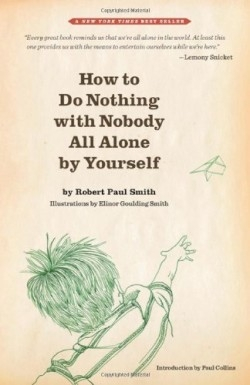
Robert Paul Smith
Tin House Books
Unknown $14.95 (130pp)
978-0-9820539-5-9
“If things were as they should be, another kid would be telling you how to do these things, or you’d be telling another kid. But since I’m the only kid left around who knows how to do these things…I guess it’s up to me.” So begins Robert Paul Smith’s book of advice on how to make one’s own fun, supplied with nothing more than pencils, blades of grass, thistles, handkerchiefs, rubber bands, and broken umbrellas.
Maybe adults always feel this way today—that kids are missing out on the simple pleasures of the past. Apparently, people felt this way back in 1958, when How to Do Nothing was first published and became a bestseller. This book is a happy antidote, full of real things that real kids can make and fool around with, just because.
There are only a couple of rules to keep in mind. First, “there’s no hollering for help.” The satisfaction is doing it on one’s own. Go to the library if you need to find something out. Next, a sharp pocketknife is safer than a dull one. As for owning a pocketknife to begin with, that’s something to work out with parents.
Parents who worry overmuch about danger should read the book first. Most of these inventions employ nothing more deadly than a spool or a horse chestnut. For the exceptions—the pocketknife and the sewing needle dart—Smith’s approach is a frank appeal to a kid’s reasonable nature. If you aim at the furniture or another kid, he says, good luck convincing your parents that this toy isn’t dangerous. With his own kids, he showed them how to use the item safely, watched them use it, and took it away if he wasn’t convinced they were ready to be careful.
The book’s rewards are great, however. Make a bracelet out of a clam shell by rubbing it on the sidewalk. Play mumbly peg. Decorate pencils, make a pin piano, or a basket out of burrs. Smith vouches for these inventions; he’s made them all, except the willow whistle—he was always a “dope” about those. Mostly, just enjoy fooling around and seeing how things work. Spending time away from the constant chatter of video and grownups can be “a good thing to do; you get to know yourself, and I think that’s the most important thing in the whole world.”
Single Woman of a Certain Age
Twenty-Eight Women Writers on the Unmarried Midlife&8212;Romantic Escapades Animal Love Empty Nests Shifting Sh
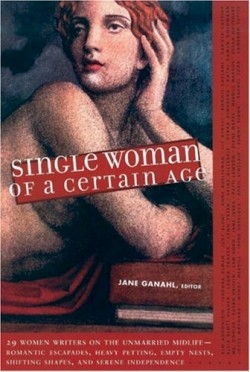
Jane Ganahl, editor
Inner Ocean
Unknown $21.95 (256pp)
978-1-930722-58-3
The “certain age” explored is middle life. The single woman is actually twenty-eight single women, writing about single-hood, motherhood, their bodies, their pasts, and—predominantly—about love. Whether the women are shunning it or making sarcastic jokes and puns at its expense, the subject always somehow comes back to love.
They write about getting back into the dating game—be it over the Internet or at cheesy singles dances. Ellie Slott Fisher compares dating with children at home to “downing a pint of Ben and Jerry’s Chunky Monkey. It feels wonderful when it’s just the two of you, but the minute you come to your senses, you feel guilty as hell.” They write about letting go of their illusions of “Mr. Right” and their impressions of what middle life is supposed to be like. And, at the end of the day, they confront the possibility of never finding true, romantic love
The editor, who has been a journalist for San Francisco daily newspapers for twenty years and writes the San Francisco Chronicle’s “Single Minded” column, collected stories that reflect the complexity of an age that is too often overlooked and played down.
In sentimental recollections and clever observations, the women relate sensitive, observant, and often humorous stories that are as telling as they are entertaining. From Cameron Tuttle sneaking peanuts into her bellybutton, to Joyce Maynard’s date with a man who only speaks in Woodstock lyrics, the book is a fast-paced journey through the intersections of life.
While each woman offers different perspectives and witty tales, they also share much in common, and the short stories could almost flow together to form one coherent novel about a single woman of a certain age. The themes run parallel from story to story and while the pitch may rise and fall, the tone remains relatively consistent: these women are frustrated but optimistic, appreciative of the irony that life often imparts, and hopeful of what may still lie ahead.
“And ultimately,” writes Merrill Markoe, “here is the best thing I have learned: that the good part of having had a checkered past is that when you’re older, if you paid attention, you’re really good at checkers.”
For any readers who were not paying close enough attention to their own
Sole Sisters
The Joys and Pains of Single Black Women
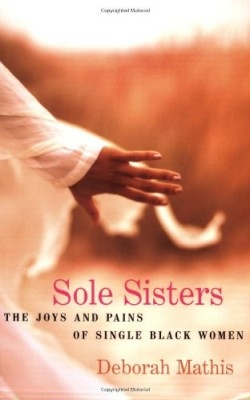
Deborah Mathis
Agate Bolden
Unknown $14.00 (230pp)
978-1-932841-27-5
The sole sister is often a lonely sister. But being “single does not necessarily mean lonely.” Some women choose to be single, even preferring to parent alone. In fact, culture critics predict that most women over the age of twenty-five, regardless of race or marital status, will find themselves single (or single-again) before they die. There are several factors, including the high rate of black men in prison and the alarming number infected with HIV/AIDS, that suggest that black women’s chances of ever getting married are slimmer than ever.
The author, a journalist and national political commentator, has personal experience with the subject, having been divorced. Curious about the plight of other singles, she interviewed 125 single black women of various ages and socio-economic levels across the country. After providing a brief glimpse into her own life as a single woman, Mathis offers ten descriptors she invented to classify herself and each interviewee. She labels the women and shares excerpts from conversations with them. A few are labeled “Shrinkers,” women who want a companion but refuse to actively search for one; “Swingles,” women who never find it difficult to find a man to date; and “Tickers,” women who are desperate to find a man because they believe they are running out of time. Mathis uses wit and humor to lighten up what could have been a depressing subject: a “freestyler” realizes that “Superman is as rare as kryptonite” and settles for less than the ideal man.
Some of the women lament the “slim pickings,” while others have no trouble finding suitable black men (as well as men of other races) to date, fall in love with, and marry, or at least share a home with. But most of the women have learned to accept that they will probably never get married or be in a committed relationship. These women highlight the perks associated with being single: “No one to report or account to, no logistics to coordinate or schedules to synchronize, no expenses to share or expenditures to explain.”
The conversational tone is comforting and reads like a gossip session amongst sisters, but may be disconcerting for readers looking for statistics, significant quotes from experts, or carefully edited prose. The book also lacks a reference page for those who would like to know more about single women’s issues.
From the disappointment of the influx of “down-low brothers,” to the pain of watching would-be suitors pass by on their way to date women of other races, Mathis tackles the nuances of being single in an honest and sincere manner. After only a few pages, readers soon realize they are not sole sisters after all. There are women who share their frustrations and triumphs all over the country.
Asian. Woman. Alone.
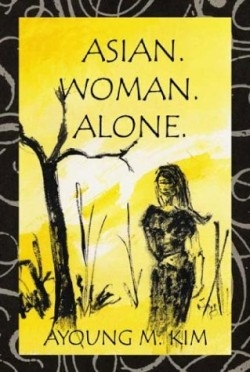
Ayoung M. Kim
Feng Liu Productions
Unknown $14.95 (184pp)
978-0-9727089-1-3
A month before her wedding, the author abruptly calls it off, much to the displeasure of her family, who want to see her married and a mother as soon as possible. As a thirty-three-year-old Korean woman, her shelf life is about to expire. She is, however, a fiercely independent American woman and will not capitulate. Five months later, she sets out on a yearlong trip through Southeast Asia and Korea. What she sees on this journey is a mirror of the turmoil inside of her: beauty and ugliness trying to dominate each other, ultimately finding balance.
Any woman traveling by herself is bound to have adventures, and Kim has plenty of them. She spends eight days on retreat at a Thai Buddhist temple, trying to find “a deeper love,” but rebelling against the imposed outward asceticism. The fact that one of the monks can’t keep from molesting the male mediators doesn’t help. She travels through Laos and sees unspeakable cruelty-livestock animals treated as if their lives are already over. In Vietnam, she eats a fine dinner in a well-known restaurant, while out front, a young man drags a boy into the street, beating him severely, and no one does a thing to stop it. Kim, who is trying to become a good Buddhist, explains the frustration she feels about doing nothing, with a Buddhist’s rationale: “I ask for the ability to experience [love] in a deeper capacity because there is no other way. This life is too hard if you don’t have that shield. Life is unpredictable; at once exquisitely beautiful and painful.”
Her travels also take her to Korea, where she and her mother visit halmonee, her ancient grandmother who cannot understand why her granddaughter is so ungrateful for her good life, so ungrateful that she won’t marry like a good Korean woman. At first, Kim’s mother defends her, but she later confesses that she is afraid of her daughter, that she too does not understand her independent spirit. Kim admits to being full of ego, and at times, there is a danger that her writing will become slightly solipsistic. Yet she is a gifted writer and poet, one who speaks four languages and has published in A. Magazine: Inside Asian American. Her powers of observation produce a wisdom that is impressive in one who is still so relatively young.
OLIVIA BOLER (June 15, 2003)
The Wayward Moon
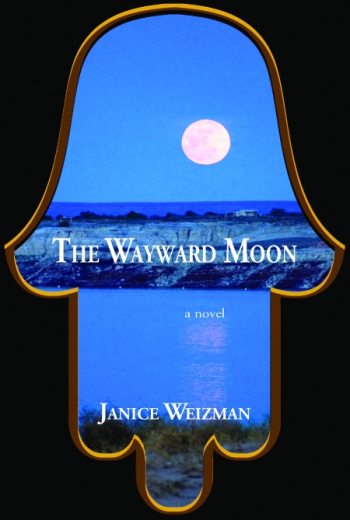
Janice Weizman
Yotzeret Publishing
Softcover $14.95 (328pp)
978-1-59287-101-8
The Wayward Moon is a magnificent piece of historical fiction and a startlingly beautiful portrayal of a strong woman in an era when women were expected to be only a man’s wife and mother to his children.
In a mesmerizing voice, Janice Weizman tells the story of Rahel, a seventeen-year-old Jewish woman living in a city outside Baghdad, circa 851. Rahel grew up without a mother and was raised by her father, a kind physician who is preparing his only daughter for marriage. As Rahel readies to meet her groom for the first time, her father is killed; in a fit of revenge and self-defense, Rahel kills her father’s murderer, a member of a prominent Muslim family. As a Jewish woman wanted for the murder of a Muslim, Rahel knows she can never return to the land of her birth, so with the assistance of her housemaid she runs away.
Disguising herself as a man, Rahel begins a lonely adventure through the deserts of Iraq. She is captured in a slave market and sent to live with a Muslim family as kitchen help. After escaping, Rahel eventually finds refuge in various other places, including a monastery, a remote tavern, and as a housemaid. Suicidal thoughts pervade her mind throughout her travels, but something keeps propelling her forward, including solving the riddle of why her father wanted her to read Antigone, the tragedy written by the Greek philosopher Sophocles. Rahel also realizes that she has strayed far from Judaism and wonders if she can ever return to the traditional life that had been in store for her.
Rahel is a flawed but likeable character. She defies convention over and over again, a testament to her strength as a woman. Having prospered in a sheltered and privileged life as the Jewish daughter of a physician, she is forced to live among strangers while in disguise, and what began as an escape gradually becomes a journey of self-discovery. A constant theme in the book is whether we have the power to alter our destinies.
Weizman’s writing is stellar, and the book is a must-read for fans of historical fiction. A Toronto native, the author lives in Israel and is cofounder of the literary journal Ilanot Review. The Wayward Moon is her first full-length novel.
HILARY DANINHIRSCH (August 30, 2012)
Hannah Hohman
